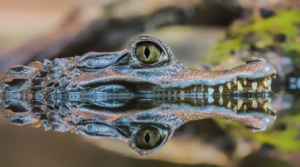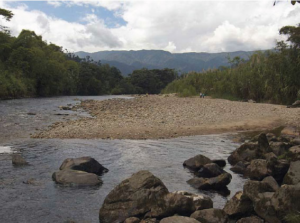How many of us have stopped for a moment to admire in awe the joyful flutter of a hummingbird? These magical birds, besides being beautiful, have perfected the art of flight like no other. They hold a special fascination for those who watch them fly forward, backward, upward and downward.
In the Global Big Day competition, Ecuador is in third place with 1154 species observed in a single day. The provinces of Pichincha, Napo and Orellana recorded the highest number of species. The Green Leader of the World destination is positioned internationally as a perfect place to observe birds, due to the diversity of climatic floors and ecosystems such as cloud forests, moorlands, valleys, rainforests and others.
The hummingbird, Ecuadorian Star or also known as Star of Chimborazo, is the only bird of its species that lives up to 5,200 m.a.s.l. The best way to observe them is in our Andean moor forests, because there they find their food in a plant called chuquiragua, those who seek to photograph this beautiful species the best hours are from 6:30 to 9:00 in the morning because the light will allow you to have better images.
The hummingbird is the symbol bird of the city of Cuenca. Its inhabitants call it hummingbird and many poets have dedicated verses to it. It is said that the spirit of the Cuencanas, is like this bird, which can not live in captivity, the average life of hummingbirds is 3 to 5 years. Ecuadorian hummingbirds can be found from sea level to Ecuador’s highest mountain, Chimborazo, the largest concentrations are often found in or near cloud forests. These are found on both slopes of the Andes.Hummingbirds are the only winged animals that have the ability to fly in all directions: right, left, forward and backward. This is why they need frequent meals, which can exceed their body weight five times in a single day.
Hummingbirds are of vital importance for many ecosystems, as they are the main pollinators of high and cold areas, in the absence of insects and bats. Hence the importance of protecting them and conserving their habitats. If you are a nature lover, Ecuador has wonderful places like Azuay in this province you can make birdwatching, as there are natural sites that are a true paradise for birdwatchers and where you can admire many species of hummingbirds. Among the most important are the Aguarongo Protected Forest; Cajas National Park; Jocotoco Reserve in Yunguilla; Cabogana Hill; Tomebamba River Ravine and Pumapungo Ethnobotanical Park.
However, they are distributed from Alaska to Chile, and the greatest diversity of species is found in the tropics. For example, there are 163 species in Ecuador, 135 in Colombia, 57 in Mexico, 51 in Costa Rica, 19 in the Caribbean and only four in Canada. Contrary to what might be thought, the ecological spectrum of hummingbirds is very broad, ranging from sea level to the highest mountain peaks, as in the Ecuadorian Andes, where they have been recorded. At an altitude of 4500 meters above sea level. They live in a variety of environments, from humid forests to temperate forests, coastal regions, deserts and some in cities. However, each species has its own environmental requirements and many are only found in very limited geographic areas.
Species
Scientific name: Amazilia tzacatl
Common name: Amazilia colirrufa
Spanish name: Rofous tailed hummingbird
It is one of the most numerous hummingbirds in semi-open areas and humid lowlands of western Ecuador. 21 mm straight bill, pinkish, bright green mandible, deep green throat and breast. Non-forestry species
This species inhabits clearings and gardens, secondary growth and forest edge in humid lowlands, extending into semi-cleared areas of the subtropics (Ridgely and Greenfield 2001), apparently after deforestation (Freile and Restall in prep.). It is also found in dry Andean valleys such as Guayllabamba, Tumbaco and Yunguilla (Freile and Restall in prep.).
Scientific name: Phaethormis hispidus
Common name: White – bearded hermit
Spanish name: White – bearded Hermit
It is located in the provinces of Morona Santiago, Napo, Orellana, Pastaza, Sucumbios, exactly in the Amazon Rainforest, Eastern Piedmont Forest.
It is a gray and green hermit, large, rainforest undergrowth.
It is characterized by being gray underneath, green above, has a gray rump and long central tail feathers, white. Its bill is quite long, slightly curved downward, has a prominent throat which is white, as well as the mustache. Both sexes are similar. It is similar to Great-billed Hermit (Phaethornis malaris), which is generally more tawny brown (not gray) and has a red or orange (not yellow) lower mandible. Found in a wide variety of lowland rainforest habitats; most common near forest edges, along rivers and around Heliconia flowers.
Scientific name: Amazilia Amazilia
Common name: Amazilia ventrirrufa
English name: Amazilia Hummingbird
It is the common hummingbird of Lima. It is recognized by its zigzagging flight from flower to flower or a fast and straight flight. It is less than 10 cm tall, with a bright rufous color, green head and white breast. It has a long straight bill with a red base and black tip (Lopez Mazzotti 2002).
The hummingbird is a very territorial and competitive bird. It feeds on the nectar of the flowers, which in turn pollinate. This bird can be observed and photographed in Ecuador at the Guayaquil Botanical Garden, it is found in the provinces of Azuay, El Oro, Esmeraldas, Guayas, Loja, Los Ríos, Manabí, Santa Elena, Santo Domingo de los Tsáchilas, Zamora Chinchipe.
Coastal Deciduous Forest, Chocó Tropical Rainforest, Western Montane Forest, Eastern Montane Forest, Western Piedmont Forest, Eastern Piedmont Forest, Inter-Andean Scrubland, Coastal Dry Scrubland.




